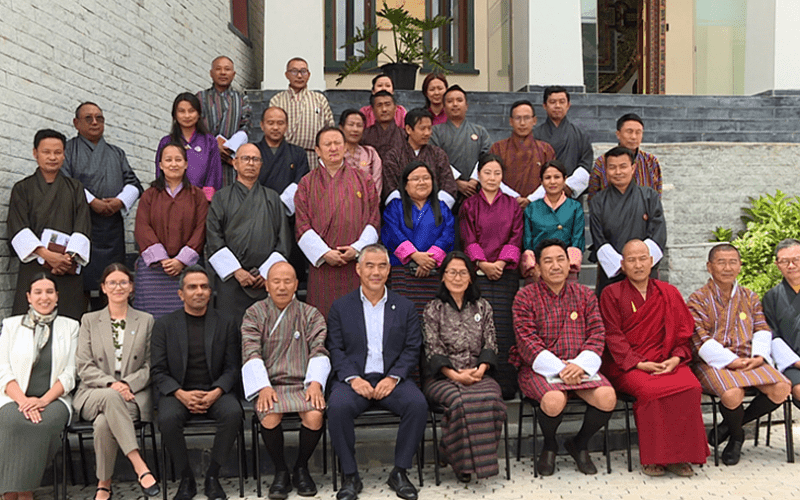Bhutan has unveiled an ambitious plan to restore up to 50,000 hectares of degraded land—an area larger than 70,000 football pitches—over the next decade, aiming to strengthen climate resilience, protect biodiversity, and promote sustainable development.
To finance the initiative, the government is seeking around USD 50 million to be invested in national conservation priorities. The effort is being driven through a four-party partnership between the Royal Government of Bhutan, Conservation International, the Bhutan Ecological Society, and the Bhutan Trust Fund for Environmental Conservation.
The agreement, seen as a major milestone in Bhutan’s environmental journey, is part of the “Mountains to Mangroves” initiative launched last year. That program aims to plant over 10 million trees across the region by 2030.
A recent one-day workshop brought together stakeholders from government, business, and philanthropy to design a blended financing model that will sustain the country’s restoration goals. Officials say this will be critical to meeting Bhutan’s constitutional mandate to maintain at least 60 percent forest cover—a benchmark that is already among the highest in the world.
“The constitution mandating the conservation of forests is an amazing thing. It’s unprecedented around the world. That influences Conservation International to try to help make that real,” said Dr. Richard M. Jeo, Chief Field Officer for Conservation International Asia-Pacific.
While Bhutan has already restored nearly 800 hectares through tree planting, the new plan aims to scale up dramatically. “Most forested areas are currently degraded,” said Leki Tshewang, Programme Officer at the Bhutan Trust Fund for Environmental Conservation. “With this partnership, we aim to restore those areas into a forest by planting around 10 million tree saplings.”
Karma Tshering, PhD, Managing Director of the Bhutan Trust Fund, highlighted the dual need to protect natural resources while supporting local communities. “We have a lot of timber, but we need that timber for the welfare of the people. This project will restore as many trees as possible, nurture them, and ensure they grow into healthy forests that benefit biodiversity, people, and the nation,” he said.
Beyond funding, Conservation International will provide scientific expertise and policy advice to align the project with Bhutan’s long-term environmental and economic objectives. The plan also includes exploring agroforestry and other livelihood opportunities that blend conservation with community development.
A comprehensive funding and restoration roadmap is expected to be released later this year, followed by the signing of a formal agreement to launch the long-term program.
“We are excited to support not just tree planting, but the restoration of entire ecosystems,” Dr. Jeo said. “That means bringing back wildlife, improving livelihoods, and creating jobs for the people of Bhutan.”
If successful, Bhutan’s restoration drive could become a model for climate and biodiversity action in mountainous regions worldwide.








